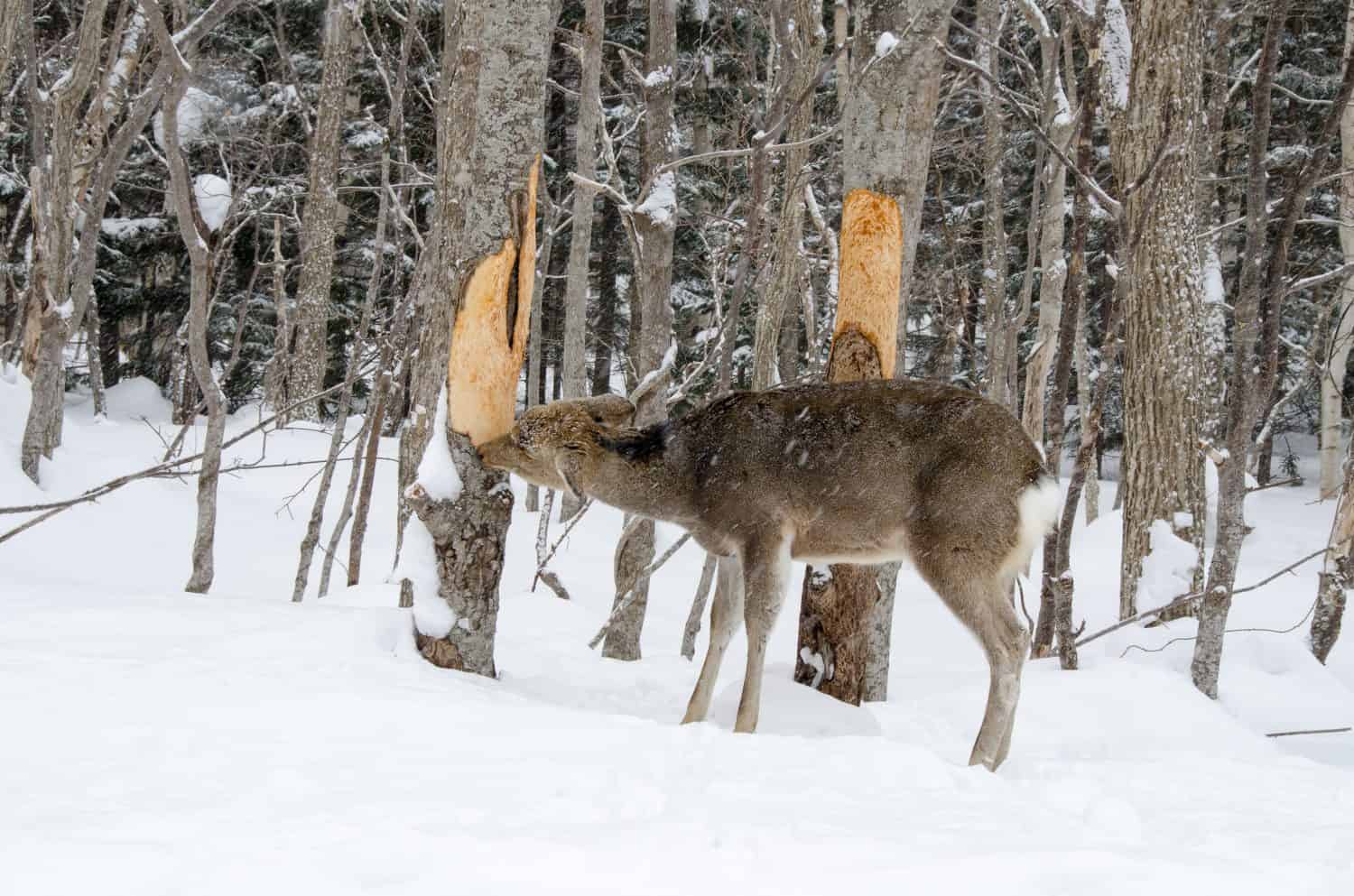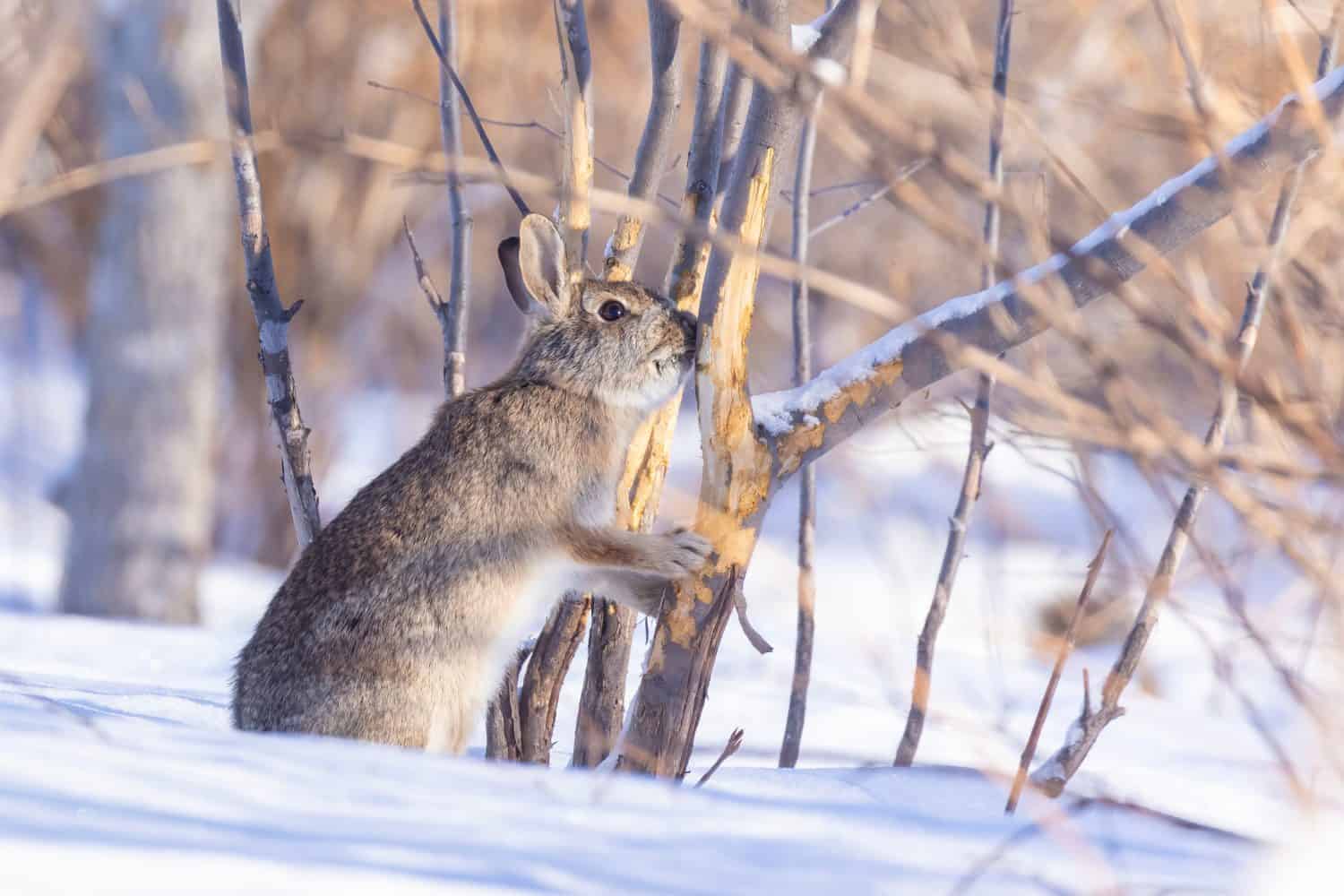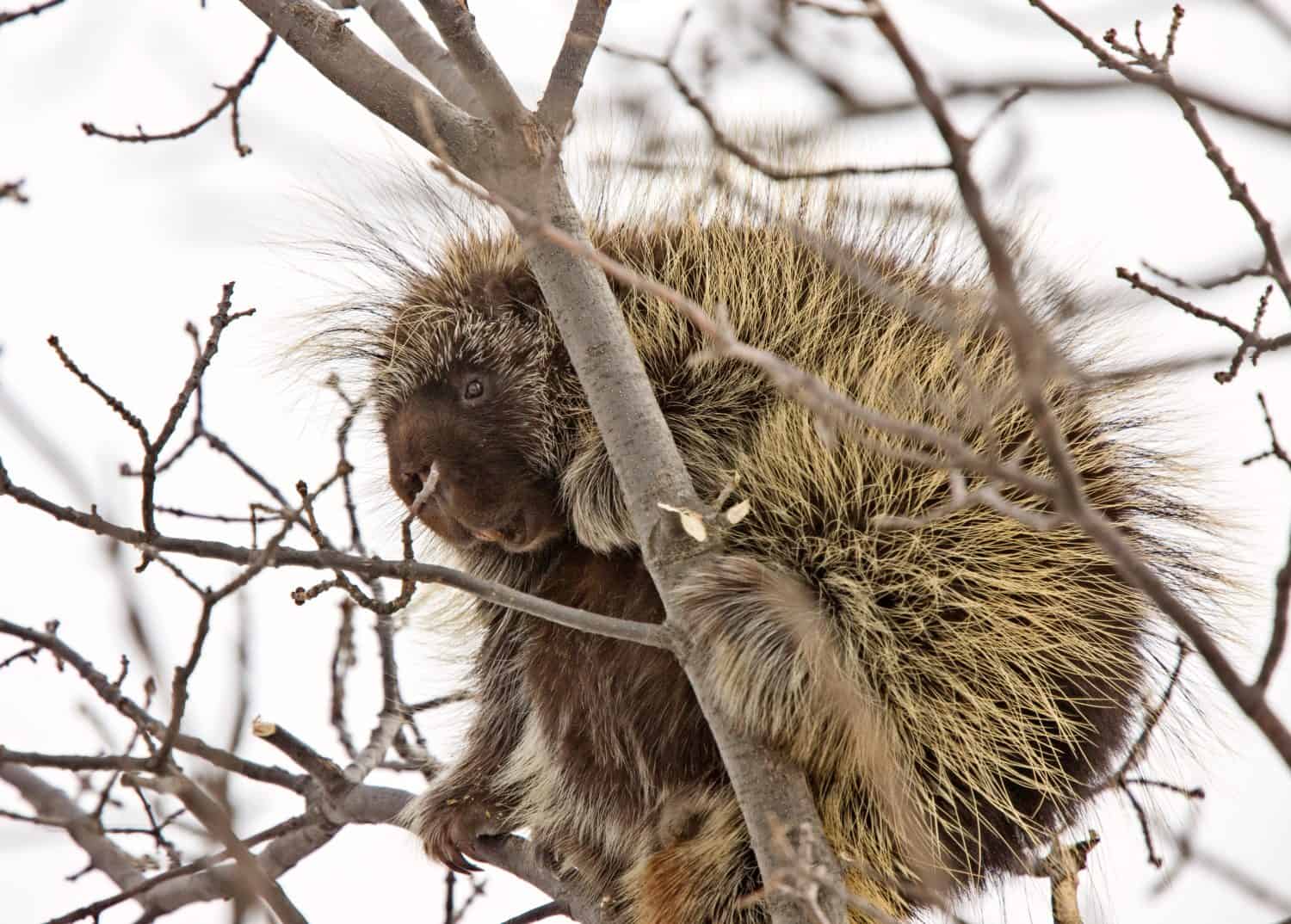To humans, eating the bark of trees likely seems quite unpalatable. But for many animals with the proper digestive system, tree bark actually supplies an abundant source of nutrition, especially in the winter months when other food sources are more scarce.
In this guide, we’ll discover five animals that eat tree bark and how they access nutrients from this woody food source.
Read on to learn more!
Why Do Animals Eat Tree Bark?
The cell walls of plants contain cellulose, hemicellulose, and lignins, with individual cells held together by pectins. Cellulose and hemicellulose are complex carbohydrates, but only some animals contain the required enzymes, cellulase and hemicellulase, to digest them. Certain colonies of microbes found in the gut of bark-eating animals produce cellulase and hemicellulase. The pectins and pectic acids that hold neighboring cells together provide sugars to bark-eating animals. Lignin, however, is by far the least digestible compound as most bark-eating animals do not contain microbes that produce the enzyme necessary, ligninase, to break lignin down.
The outer layer of bark consists mainly of layers of crushed, dead cells with a high lignin content. The inner layer of bark, however, is comprised of living cells packed with the complex carbohydrates, sugars, and minerals bark-eating animals can digest.
Deer (Cervidae)

As ruminants, deer repeatedly regurgitate partially chewed bark from the rumen chamber of their stomach until the food is fully digested.
©Tatsuo Nakamura/Shutterstock.com
All species of deer in the Cervidae family can eat tree bark. This is especially common during the winter in arboreal environments.
Deer are an example of a ruminant, an even-toed ungulate mammal that chews regurgitated food from a stomach chamber called the rumen. Like cattle, the deer’s stomach is divided into four chambers. The first chamber is the rumen, and it is this chamber that contains the necessary microorganisms that produce the enzymes required to digest tree bark.
Deer will quickly strip bark from trees and only partially chew their food before swallowing it. Later, when the deer are able to rest, they repeatedly regurgitate and chew the bark from the rumen until it is mechanically and chemically broken down enough to pass to the next chamber of the stomach, the reticulum.
Animals That Eat Tree Bark: Beavers (Castor spp.)
Both extant species of beaver, the North American beaver (Castor canadensis) and the Eurasian beaver (Castor fiber), will strip and eat the bark off trees. Beavers primarily devour the bark from young twigs, the sapwood of branches, and small tree trunks. This young, flexible bark contains less lignin.
In the winter, beavers feed almost exclusively on bark and other woody vegetation. In the summer, these clever critters will store strips of wood underwater in their shelters as food supplies for the winter. Their ever-growing incisors and powerful molars slice through the wood and grind down fibrous sections of bark.

Beavers will strip away bark sections and store them underwater as a food source in winter.
©Dolfilms/Shutterstock.com
Rabbits (Leporidae)
While the digestive system of rabbits (Leporidae) isn’t particularly robust, they have adapted a system that allows them to gnaw and eat tree bark during the winter. While their stomach is rather simple and food passes quickly through it, their colon contains a high diversity of symbiotic microorganisms that greatly increase their food digestion.
To markedly increase their ability to digest the cellulose in tree bark, rabbits will practice coprophagy- eating their feces. This re-ingested food then repeatedly passes through the microbial-rich colon, where cellulose digestion can increase two to three times the amount compared to the first pass.

Rabbits use coprophagy to ensure efficient digestion of the cellulose in tree bark.
©Mircea Costina/Shutterstock.com
Animals That Eat Tree Bark: North American Porcupine (Erethizon dorsatum)
During the winter, the North American porcupine (Erethizon dorsatum) frequently climbs trees to eat twigs and the inner bark of a variety of tree species.
The large intestine of the porcupine is extremely long, allowing for a slow passage time through the intestinal tract, which aids in increased absorption of nutrients. Its large intestine also contains a high percentage of microorganisms that produce cellulase and hemicellulase. The North American porcupine will also thoroughly chew the bark into a dust-like consistency, allowing for a marked increase in digestion.

Porcupines will frequently climb trees in winter to access bark from small branches.
©Pictureguy/Shutterstock.com
Water Vole (Arvicola amphibius)
During the winter, when other food sources are scarce, the water vole (Arvicola amphibius) will strip and eat the inner layer of bark from small, young trees and shrubs. Their digestive system is not robust enough to process tougher bark sections, so they efficiently strip away the tough outer layer to reach the softer, more digestible cambium layer.
These small rodents typically target tree bark about 8 inches or less from the ground. They will often strip an entire circle of bark from the tree. This process, called girdling, can seriously damage or even kill young trees and shrubs.

In the winter, water voles will strip bark from small, young trees and shrubs to access the soft inner bark layer.
The photo featured at the top of this post is © erremmo.com/Shutterstock.com
Thank you for reading! Have some feedback for us? Contact the AZ Animals editorial team.






